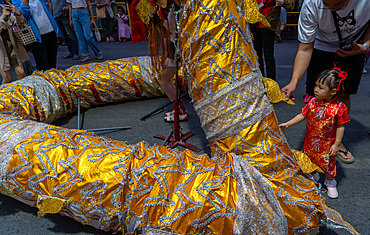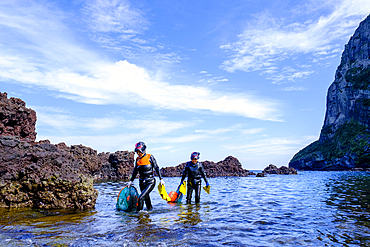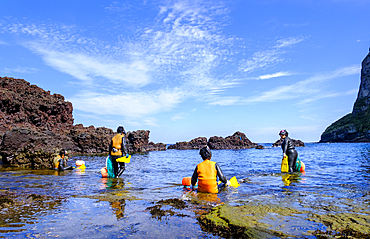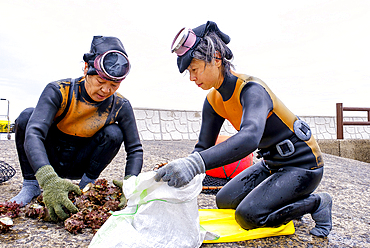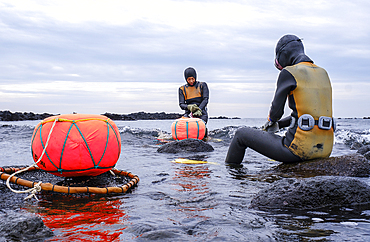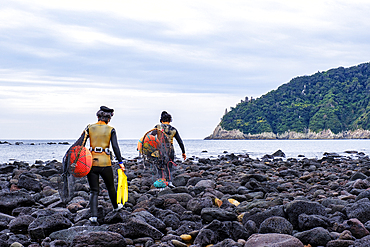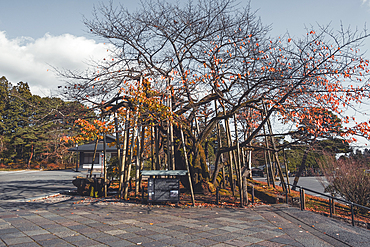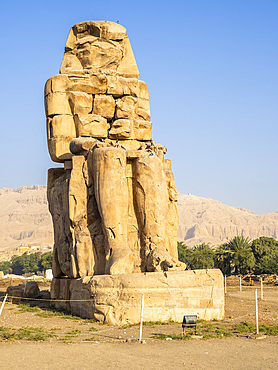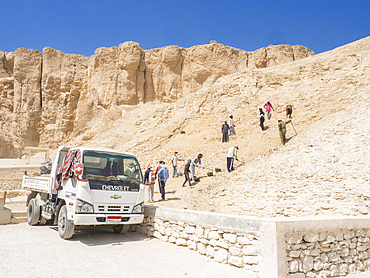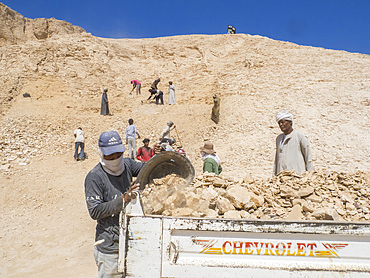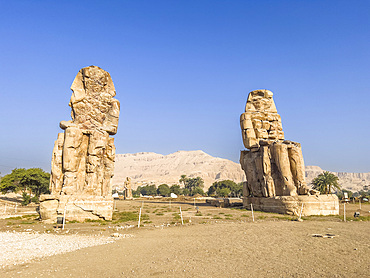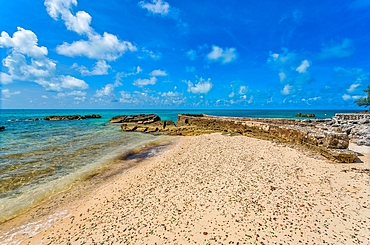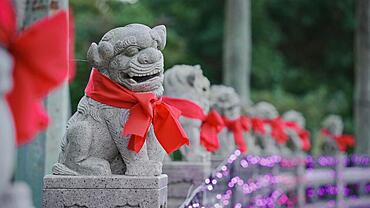Recent searches
Loading...
722-217 - Bhubaneswar, Odisha is nicknamed India?s ?City of Temples? in which around 350 are still standing, many dating back to well over one-thousand years. Shown here is an aspect of the 9th century Rameshwar Temple dedicated the Hindu deity Shiva.
1188-1105 - Songkram Thai Buddhist New Year parade, blessings and water battles celebrations in Chiang Mai, Thailand
1188-1104 - Songkram Thai Buddhist New Year parade, blessings and water battles celebrations in Chiang Mai, Thailand
1188-1103 - Songkram Thai Buddhist New Year parade, blessings and water battles celebrations in Chiang Mai, Thailand
1188-1102 - Songkram Thai Buddhist New Year parade, blessings and water battles celebrations in Chiang Mai, Thailand
722-205 - Bhubaneswar, Odisha is nicknamed India's City of Temples in which around 350 are still standing, many dating back to well over one-thousand years. Shown here is the 11th century Rajarani Temple dedicated the Hindu deity Shiva.
722-204 - Bhubaneswar, Odisha is nicknamed India's City of Temples in which around 350 are still standing, many dating back to well over one-thousand years. Shown here are aspects of the 9th century Mukteswara Temple dedicated the Hindu deity Shiva.
722-203 - Bhubaneswar, Odisha is nicknamed India's City of Temples in which around 350 are still standing, many dating back to well over one-thousand years. Shown here are aspects of the 9th century Mukteswara Temple dedicated the Hindu deity Shiva.
722-202 - Bhubaneswar, Odisha is nicknamed India's City of Temples in which around 350 are still standing, many dating back to well over one-thousand years. Shown here are aspects of the 9th century Mukteswara Temple dedicated the Hindu deity Shiva.
722-201 - Bhubaneswar, Odisha is nicknamed India's City of Temples in which around 350 are still standing, many dating back to well over one-thousand years. Shown here are aspects of the 9th century Mukteswara Temple dedicated the Hindu deity Shiva.
722-213 - Bhubaneswar, capital of the ancient, east Indian State of Odisha, previously Orissa. Here the hilltop Digambara Jain Temple which stands above the Udayagiri and Khandagiri complex of caves dating back to over 100 years BCE.
722-212 - Bhubaneswar, Odisha. Here we see examples of monks' cells cut into the hillside rock among the Udayagiri and Khandagiri caves dating back to over 100 years BCE sculptured into the hillside as religious retreats for Jain devotees.
722-210 - Bhubaneswar, Odisha. Here we see examples of monks' cells cut into the hillside rock among the Udayagiri and Khandagiri caves dating back to over 100 years BCE sculptured into the hillside as religious retreats for Jain devotees.
722-211 - Bhubaneswar, Odisha. Here we see examples of monks' cells cut into the hillside rock among the Udayagiri and Khandagiri caves dating back to over 100 years BCE sculptured into the hillside as religious retreats for Jain devotees.
722-209 - Bhubaneswar, Odisha. Here we see examples of monks' cells cut into the hillside rock among the Udayagiri and Khandagiri caves dating back to over 100 years BCE sculptured into the hillside as religious retreats for Jain devotees.
722-208 - Bhubaneswar, Odisha. Here we see examples of monks' cells cut into the hillside rock among the Udayagiri and Khandagiri caves dating back to over 100 years BCE sculptured into the hillside as religious retreats for Jain devotees.
722-207 - Bhubaneswar, Odisha. Here we see the garden at the entrance to the Udayagiri and Khandagiri caves dating back to over 100 years BCE sculptured into the hillside as religious retreats for Jain devotees.
722-206 - Bhubaneswar, Odisha. Here we see a small sanctuary near the entrance to the site of the of the Udayagiri and Khandagiri caves dating back to over 100 years BCE sculptured into the hillside as religious retreats for Jain devotees.
722-198 - Bhubaneswar, Odisha is nicknamed India's 'City of Temples' in which around 350 are still standing, many dating back to well over one-thousand years. Shown here is an aspect of the 11th century Lingaraja Temple complex dedicated the Hindu deity Shiva.
1383-98 - The Kulamba Traditional Ceremony of the Chewa people takes place every year on the last Saturday in August near Katete. The Chewa who also live in Mozambique and Malawi come to pay homage to their Chief Kalonga Gaia Uni.
1383-96 - The Kulamba Traditional Ceremony of the Chewa people takes place every year on the last Saturday in August near Katete. The Chewa who also live in Mozambique and Malawi come to pay homage to their Chief Kalonga Gaia Uni.
1383-97 - The Kulamba Traditional Ceremony of the Chewa people takes place every year on the last Saturday in August near Katete. The Chewa who also live in Mozambique and Malawi come to pay homage to their Chief Kalonga Gaia Uni.
1383-95 - The Kulamba Traditional Ceremony of the Chewa people takes place every year on the last Saturday in August near Katete. The Chewa who also live in Mozambique and Malawi come to pay homage to their Chief Kalonga Gaia Uni.
1383-94 - The Kulamba Traditional Ceremony of the Chewa people takes place every year on the last Saturday in August near Katete. The Chewa who also live in Mozambique and Malawi come to pay homage to their Chief Kalonga Gaia Uni.
1383-92 - The Kulamba Traditional Ceremony of the Chewa people takes place every year on the last Saturday in August near Katete. The Chewa who also live in Mozambique and Malawi come to pay homage to their Chief Kalonga Gaia Uni.
1383-93 - The Kulamba Traditional Ceremony of the Chewa people takes place every year on the last Saturday in August near Katete. The Chewa who also live in Mozambique and Malawi come to pay homage to their Chief Kalonga Gaia Uni.
1383-91 - The Kulamba Traditional Ceremony of the Chewa people takes place every year on the last Saturday in August near Katete. The Chewa who also live in Mozambique and Malawi come to pay homage to their Chief Kalonga Gaia Uni.
1383-90 - The Kulamba Traditional Ceremony of the Chewa people takes place every year on the last Saturday in August near Katete. The Chewa who also live in Mozambique and Malawi come to pay homage to their Chief Kalonga Gaia Uni.
1383-89 - The Kulamba Traditional Ceremony of the Chewa people takes place every year on the last Saturday in August near Katete. The Chewa who also live in Mozambique and Malawi come to pay homage to their Chief Kalonga Gaia Uni.
1383-88 - The Kulamba Traditional Ceremony of the Chewa people takes place every year on the last Saturday in August near Katete. The Chewa who also live in Mozambique and Malawi come to pay homage to their Chief Kalonga Gaia Uni.
1383-87 - The Kulamba Traditional Ceremony of the Chewa people takes place every year on the last Saturday in August near Katete. The Chewa who also live in Mozambique and Malawi come to pay homage to their Chief Kalonga Gaia Uni.
1383-86 - The Kulamba Traditional Ceremony of the Chewa people takes place every year on the last Saturday in August near Katete. The Chewa who also live in Mozambique and Malawi come to pay homage to their Chief Kalonga Gaia Uni.
1383-85 - The Kulamba Traditional Ceremony of the Chewa people takes place every year on the last Saturday in August near Katete. The Chewa who also live in Mozambique and Malawi come to pay homage to their Chief Kalonga Gaia Uni.
1383-83 - The Kulamba Traditional Ceremony of the Chewa people takes place every year on the last Saturday in August near Katete. The Chewa who also live in Mozambique and Malawi come to pay homage to their Chief Kalonga Gaia Uni.
1383-84 - The Kulamba Traditional Ceremony of the Chewa people takes place every year on the last Saturday in August near Katete. The Chewa who also live in Mozambique and Malawi come to pay homage to their Chief Kalonga Gaia Uni.
1383-82 - The Kulamba Traditional Ceremony of the Chewa people takes place every year on the last Saturday in August near Katete. The Chewa who also live in Mozambique and Malawi come to pay homage to their Chief Kalonga Gaia Uni.
1383-81 - The Kulamba Traditional Ceremony of the Chewa people takes place every year on the last Saturday in August near Katete. The Chewa who also live in Mozambique and Malawi come to pay homage to their Chief Kalonga Gaia Uni.
1383-80 - The Kulamba Traditional Ceremony of the Chewa people takes place every year on the last Saturday in August near Katete. The Chewa who also live in Mozambique and Malawi come to pay homage to their Chief Kalonga Gaia Uni.
1383-79 - The Kulamba Traditional Ceremony of the Chewa people takes place every year on the last Saturday in August near Katete. The Chewa who also live in Mozambique and Malawi come to pay homage to their Chief Kalonga Gaia Uni.
1383-77 - The Kulamba Traditional Ceremony of the Chewa people takes place every year on the last Saturday in August near Katete. The Chewa who also live in Mozambique and Malawi come to pay homage to their Chief Kalonga Gaia Uni.
1383-78 - The Kulamba Traditional Ceremony of the Chewa people takes place every year on the last Saturday in August near Katete. The Chewa who also live in Mozambique and Malawi come to pay homage to their Chief Kalonga Gaia Uni.
1383-76 - The Kulamba Traditional Ceremony of the Chewa people takes place every year on the last Saturday in August near Katete. The Chewa who also live in Mozambique and Malawi come to pay homage to their Chief Kalonga Gaia Uni.
1383-75 - The Kulamba Traditional Ceremony of the Chewa people takes place every year on the last Saturday in August near Katete. The Chewa who also live in Mozambique and Malawi come to pay homage to their Chief Kalonga Gaia Uni.
1383-74 - The Kulamba Traditional Ceremony of the Chewa people takes place every year on the last Saturday in August near Katete. The Chewa who also live in Mozambique and Malawi come to pay homage to their Chief Kalonga Gaia Uni.
1383-73 - The Kulamba Traditional Ceremony of the Chewa people takes place every year on the last Saturday in August near Katete. The Chewa who also live in Mozambique and Malawi come to pay homage to their Chief Kalonga Gaia Uni.
1383-72 - The Kulamba Traditional Ceremony of the Chewa people takes place every year on the last Saturday in August near Katete. The Chewa who also live in Mozambique and Malawi come to pay homage to their Chief Kalonga Gaia Uni.
1383-71 - The Kulamba Traditional Ceremony of the Chewa people takes place every year on the last Saturday in August near Katete. The Chewa who also live in Mozambique and Malawi come to pay homage to their Chief Kalonga Gaia Uni.
1383-70 - The Kulamba Traditional Ceremony of the Chewa people takes place every year on the last Saturday in August near Katete. The Chewa who also live in Mozambique and Malawi come to pay homage to their Chief Kalonga Gaia Uni.
1383-69 - The Kulamba Traditional Ceremony of the Chewa people takes place every year on the last Saturday in August near Katete. The Chewa who also live in Mozambique and Malawi come to pay homage to their Chief Kalonga Gaia Uni.
1383-67 - The Kulamba Traditional Ceremony of the Chewa people takes place every year on the last Saturday in August near Katete. The Chewa who also live in Mozambique and Malawi come to pay homage to their Chief Kalonga Gaia Uni.
1383-66 - The Kulamba Traditional Ceremony of the Chewa people takes place every year on the last Saturday in August near Katete. The Chewa who also live in Mozambique and Malawi come to pay homage to their Chief Kalonga Gaia Uni.
1383-65 - The Kulamba Traditional Ceremony of the Chewa people takes place every year on the last Saturday in August near Katete. The Chewa who also live in Mozambique and Malawi come to pay homage to their Chief Kalonga Gaia Uni.
1383-63 - The Kulamba Traditional Ceremony of the Chewa people takes place every year on the last Saturday in August near Katete. The Chewa who also live in Mozambique and Malawi come to pay homage to their Chief Kalonga Gaia Uni.
1383-64 - The Kulamba Traditional Ceremony of the Chewa people takes place every year on the last Saturday in August near Katete. The Chewa who also live in Mozambique and Malawi come to pay homage to their Chief Kalonga Gaia Uni.
1383-62 - The Kulamba Traditional Ceremony of the Chewa people takes place every year on the last Saturday in August near Katete. The Chewa who also live in Mozambique and Malawi come to pay homage to their Chief Kalonga Gaia Uni.
1383-61 - The Kulamba Traditional Ceremony of the Chewa people takes place every year on the last Saturday in August near Katete. The Chewa who also live in Mozambique and Malawi come to pay homage to their Chief Kalonga Gaia Uni.
1383-60 - The Kulamba Traditional Ceremony of the Chewa people takes place every year on the last Saturday in August near Katete. The Chewa who also live in Mozambique and Malawi come to pay homage to their Chief Kalonga Gaia Uni.
1383-59 - The Kulamba Traditional Ceremony of the Chewa people takes place every year on the last Saturday in August near Katete. The Chewa who also live in Mozambique and Malawi come to pay homage to their Chief Kalonga Gaia Uni.
1383-58 - The Kulamba Traditional Ceremony of the Chewa people takes place every year on the last Saturday in August near Katete. The Chewa who also live in Mozambique and Malawi come to pay homage to their Chief Kalonga Gaia Uni.
1383-57 - The Kulamba Traditional Ceremony of the Chewa people takes place every year on the last Saturday in August near Katete. The Chewa who also live in Mozambique and Malawi come to pay homage to their Chief Kalonga Gaia Uni.
1383-56 - The Kulamba Traditional Ceremony of the Chewa people takes place every year on the last Saturday in August near Katete. The Chewa who also live in Mozambique and Malawi come to pay homage to their Chief Kalonga Gaia Uni.
1383-55 - The Kulamba Traditional Ceremony of the Chewa people takes place every year on the last Saturday in August near Katete. The Chewa who also live in Mozambique and Malawi come to pay homage to their Chief Kalonga Gaia Uni.
1383-54 - The Kulamba Traditional Ceremony of the Chewa people takes place every year on the last Saturday in August near Katete. The Chewa who also live in Mozambique and Malawi come to pay homage to their Chief Kalonga Gaia Uni.
1383-53 - The Kulamba Traditional Ceremony of the Chewa people takes place every year on the last Saturday in August near Katete. The Chewa who also live in Mozambique and Malawi come to pay homage to their Chief Kalonga Gaia Uni.
1358-386 - The Wilmington Yew. A yew tree in the churchyard of St Mary and St Peter, Wilmington, East Sussex which is believed to be at least 1,600 years old.
860-292474 - Giant Seychelles tortoise (Aldabrachelys gigantea), Turtle island, Prison island, Zanzibar. This island was used as a prison for slaves, and four giant Seychelles tortoises were introduced. Today, they are protected from poachers, and the oldest are between 170 and 200 years old.
860-292443 - Tek rebreather diver at a depth of 70 meters with a DPV specially equipped with 60,000 lumen lighting and 12 Gopro to carry out a 3D survey of a karstic cave submerged for over 14,000 years, Passe Bateau Sud, Mayotte Lagoon
860-292276 - The Petrified Forest National Park is home to thousands of fossilized tree trunks approximately 200 million years old (Triassic period). Arizona. USA.
1188-1039 - Chinese New Year celebrations in Chinatown, Chiang Mai, Thailand
1188-1038 - Chinese New Year celebrations in Chinatown, Chiang Mai, Thailand
1188-1037 - Chinese New Year celebrations in Chinatown, Chiang Mai, Thailand
1188-1036 - Chinese New Year celebrations in Chinatown, Chiang Mai, Thailand
1188-1035 - Chinese New Year celebrations in Chinatown, Chiang Mai, Thailand
1111-267 - Haenyeo diving for conch, octopus, seaweed, and other seafood. Famous for diving into their eighties for being able to hold their breath for up to two minutes, the Haenyeo have harvested Jeju's oceans for hundreds of years.
1111-266 - Haenyeo diving for conch, octopus, seaweed, and other seafood. Famous for diving into their eighties for being able to hold their breath for up to two minutes, the Haenyeo have harvested Jeju's oceans for hundreds of years.
1111-265 - Haenyeo diving for conch, octopus, seaweed, and other seafood. Famous for diving into their eighties for being able to hold their breath for up to two minutes, the Haenyeo have harvested Jeju's oceans for hundreds of years.
1111-254 - Haenyeo women sort their catch. They dive for conch, octopus, seaweed, and other seafood. Famous for diving into their eighties for being able to hold their breath for up to two minutes, the Haenyeo have harvested Jeju's oceans for hundreds of years.
1111-252 - Haenyeo diving for conch, octopus, seaweed, and other seafood. Famous for diving into their eighties for being able to hold their breath for up to two minutes, the Haenyeo have harvested Jeju's oceans for hundreds of years.
1111-251 - Haenyeo diving for conch, octopus, seaweed, and other seafood. Famous for diving into their eighties for being able to hold their breath for up to two minutes, the Haenyeo have harvested Jeju's oceans for hundreds of years.
1336-988 - Nikkozan Rinnoji Temple 500 years old cherry tree in autumn, Nikko, Tochigi, Honshu, Japan, Asia
832-404355 - Young Caucasian mother playing with her in the room with toys. Baby less than a year learning the first lessons of her mother. Mother playing with her son and hugging him lovingly
832-404354 - Young Caucasian mother playing with her in the room with toys. Baby less than a year learning the first lessons of her mother. Boy playing on the floor with toys
832-404353 - Young Caucasian mother playing with her in the room with toys. Baby less than a year learning the first lessons of her mother. Painting with color paints
832-403893 - Wurzen post office milepost from the year 1724, Wurzen, Saxony, Germany, Europe
832-402893 - Two year old boy enjoying summer in a swimming pool, smiling on vacation from the water
1112-7820 - Seated statue, one of the Colossi of Memnon, near the Valley of the Kings, where for a period of 500 years rock tombs were excavated for pharaohs, UNESCO World Heritage Site, Thebes, Egypt, North Africa, Africa
1112-7817 - Workers excavating a new site in the Valley of the Kings, where for a period of 500 years tombs were excavated for pharaohs, Thebes, Egypt, North Africa, Africa
1112-7814 - Workers excavating a new site in the Valley of the Kings, where for a period of 500 years tombs were excavated for pharaohs, Thebes, Egypt, North Africa, Africa
1112-7815 - The Colossi of Memnon, seated statues near the Valley of the Kings, where for a period of 500 years rock tombs were excavated for pharaohs, UNESCO World Hderitage Site, Thebes, Egypt, North Africa, Africa
1358-203 - Glass Beach, site of large quantities of sea glass, from shipwrecks and bottles thrown into the sea from the Royal Navy Dockyard over hundreds of years, Bermuda, Atlantic, North America
1358-204 - Glass Beach, site of large quantities of sea glass, from shipwrecks and bottles thrown into the sea from the Royal Navy Dockyard over hundreds of years, Bermuda, Atlantic, North America
1358-202 - Glass Beach, site of large quantities of sea glass, from shipwrecks and bottles thrown into the sea from the Royal Navy Dockyard over hundreds of years, Bermuda, Atlantic, North America
1358-201 - Glass Beach, site of large quantities of sea glass, from shipwrecks and bottles thrown into the sea from the Royal Navy Dockyard over hundreds of years, Bermuda, Atlantic, North America
1358-200 - Glass Beach, site of large quantities of sea glass, from shipwrecks and bottles thrown into the sea from the Royal Navy Dockyard over hundreds of years, Bermuda, Atlantic, North America
1358-199 - Glass Beach, site of large quantities of sea glass, from shipwrecks and bottles thrown into the sea from the Royal Navy Dockyard over hundreds of years, Bermuda, Atlantic, North America
1358-198 - Glass Beach, site of large quantities of sea glass, from shipwrecks and bottles thrown into the sea from the Royal Navy Dockyard over hundreds of years, Bermuda, Atlantic, North America
733-3225 - Miao New Year festival celebrations, Xijiang, Guizhou Province, China, Asia
832-401344 - Chinese style lion sculptures at new year




































































